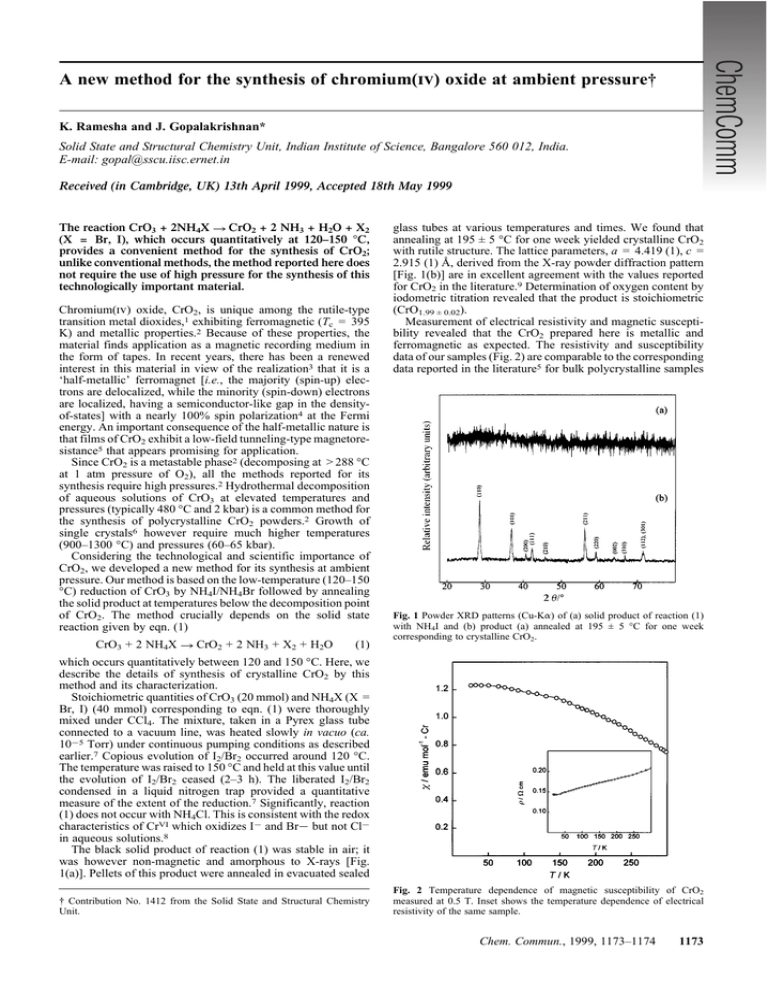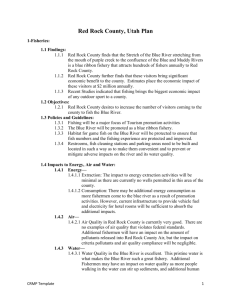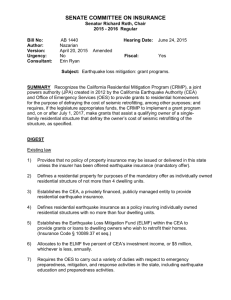A new method for the synthesis of chromium(iv) oxide at...
advertisement

A new method for the synthesis of chromium(iv) oxide at ambient pressure† K. Ramesha and J. Gopalakrishnan* Solid State and Structural Chemistry Unit, Indian Institute of Science, Bangalore 560 012, India. E-mail: gopal@sscu.iisc.ernet.in Received (in Cambridge, UK) 13th April 1999, Accepted 18th May 1999 The reaction CrO3 + 2NH4X ? CrO2 + 2 NH3 + H2O + X2 (X = Br, I), which occurs quantitatively at 120–150 °C, provides a convenient method for the synthesis of CrO2; unlike conventional methods, the method reported here does not require the use of high pressure for the synthesis of this technologically important material. Chromium(iv) oxide, CrO2, is unique among the rutile-type transition metal dioxides,1 exhibiting ferromagnetic (Tc = 395 K) and metallic properties.2 Because of these properties, the material finds application as a magnetic recording medium in the form of tapes. In recent years, there has been a renewed interest in this material in view of the realization3 that it is a ‘half-metallic’ ferromagnet [i.e., the majority (spin-up) electrons are delocalized, while the minority (spin-down) electrons are localized, having a semiconductor-like gap in the densityof-states] with a nearly 100% spin polarization4 at the Fermi energy. An important consequence of the half-metallic nature is that films of CrO2 exhibit a low-field tunneling-type magnetoresistance5 that appears promising for application. Since CrO2 is a metastable phase2 (decomposing at > 288 °C at 1 atm pressure of O2), all the methods reported for its synthesis require high pressures.2 Hydrothermal decomposition of aqueous solutions of CrO3 at elevated temperatures and pressures (typically 480 °C and 2 kbar) is a common method for the synthesis of polycrystalline CrO2 powders.2 Growth of single crystals6 however require much higher temperatures (900–1300 °C) and pressures (60–65 kbar). Considering the technological and scientific importance of CrO2, we developed a new method for its synthesis at ambient pressure. Our method is based on the low-temperature (120–150 °C) reduction of CrO3 by NH4I/NH4Br followed by annealing the solid product at temperatures below the decomposition point of CrO2. The method crucially depends on the solid state reaction given by eqn. (1) CrO3 + 2 NH4X ? CrO2 + 2 NH3 + X2 + H2O (1) glass tubes at various temperatures and times. We found that annealing at 195 ± 5 °C for one week yielded crystalline CrO2 with rutile structure. The lattice parameters, a = 4.419 (1), c = 2.915 (1) Å, derived from the X-ray powder diffraction pattern [Fig. 1(b)] are in excellent agreement with the values reported for CrO2 in the literature.9 Determination of oxygen content by iodometric titration revealed that the product is stoichiometric (CrO1.99 ± 0.02). Measurement of electrical resistivity and magnetic susceptibility revealed that the CrO2 prepared here is metallic and ferromagnetic as expected. The resistivity and susceptibility data of our samples (Fig. 2) are comparable to the corresponding data reported in the literature5 for bulk polycrystalline samples Fig. 1 Powder XRD patterns (Cu-Ka) of (a) solid product of reaction (1) with NH4I and (b) product (a) annealed at 195 ± 5 °C for one week corresponding to crystalline CrO2. which occurs quantitatively between 120 and 150 °C. Here, we describe the details of synthesis of crystalline CrO2 by this method and its characterization. Stoichiometric quantities of CrO3 (20 mmol) and NH4X (X = Br, I) (40 mmol) corresponding to eqn. (1) were thoroughly mixed under CCl4. The mixture, taken in a Pyrex glass tube connected to a vacuum line, was heated slowly in vacuo (ca. 1025 Torr) under continuous pumping conditions as described earlier.7 Copious evolution of I2/Br2 occurred around 120 °C. The temperature was raised to 150 °C and held at this value until the evolution of I2/Br2 ceased (2–3 h). The liberated I2/Br2 condensed in a liquid nitrogen trap provided a quantitative measure of the extent of the reduction.7 Significantly, reaction (1) does not occur with NH4Cl. This is consistent with the redox characteristics of CrVI which oxidizes I2 and Br2 but not Cl2 in aqueous solutions.8 The black solid product of reaction (1) was stable in air; it was however non-magnetic and amorphous to X-rays [Fig. 1(a)]. Pellets of this product were annealed in evacuated sealed † Contribution No. 1412 from the Solid State and Structural Chemistry Unit. Fig. 2 Temperature dependence of magnetic susceptibility of CrO2 measured at 0.5 T. Inset shows the temperature dependence of electrical resistivity of the same sample. Chem. Commun., 1999, 1173–1174 1173 We can also prepare rutile-related (monoclinic) VO2 as well as solid solutions of Cr12xVxO2 by the same method starting from V2O5 and V2O5–CrO3 mixtures. Therefore, we believe that the method described here can be extended to the synthesis of other metastable oxides containing CrIV and/or VIV, in general. We thank the Department of Science and Technology, Government of India (Project No. SP/S1/H-17/97) for financial support. K. R. thanks the Council of Scientific and Industiral Research, New Delhi for the award of a fellowship. Notes and references Fig. 3 SEM image of crystalline CrO2. as well as films of CrO2. An SEM study showed that the samples are fairly crystalline, the particle sizes being in the range of a few mm (Fig. 3). We believe that the key to the success of the method lies in the quantitative nature of reaction (1) which can be controlled to give an average oxidation state of CrIV in the solid state by using the required quantity of NH4I/NH4Br in the reaction mixture. This is in contrast to reactions between CrVI and I2/Br2 in aqueous media, which proceed directly to give CrIII; i.e. CrVI is not accessible as a stable species in aqueous media by redox reactions. An investigation of the X-ray morphous CrO2 would throw light on the mechanism of reaction (1) which stabilizes CrVI in the solid state. 1174 Chem. Commun., 1999, 1173–1174 1 D. B. Rogers, R. D. Shannon, A. W. Sleight and J. L. Gillson, Inorg. Chem., 1969, 8, 841. 2 B. L. Chamberland, CRC Crit. Rev. Solid State Mater. Sci., 1977, 7, 1. 3 K. P. Kämper, W. Schmitt, G. Güntherodt, R. J. Gambino and R. Ruf, Phys. Rev. Lett., 1987, 59, 2788. 4 R. J. Soulen Jr., J. M. Byers, M. S. Osofsky, B. Nadgorny, T. Ambrose, S. F. Cheng, P. R. Broussard, C. T. Tanaka, J. Nowak, J. S. Moodera, A. Barry and J. M. D. Coey, Science, 1998, 282, 85. 5 H. Y. Hwang and S.-W. Cheong, Science, 1997, 278, 1607. 6 B. L. Chamberland, Mater. Res. Bull., 1967, 2, 827. 7 V. Bhat and J. Gopalakrishnan, J. Chem. Soc. Chem. Commun., 1986, 1644. 8 J. Bassett, R. C. Denney, G. H. Jeffery and J. Mendham, Vogel’s Textbook of Quantitative Inorganic Analysis, Longman, London, 4th edn., 1978, p. 51. 9 JCPDS-International Centre for Diffraction Data Card No. 43–1040. Communication 9/02927C





